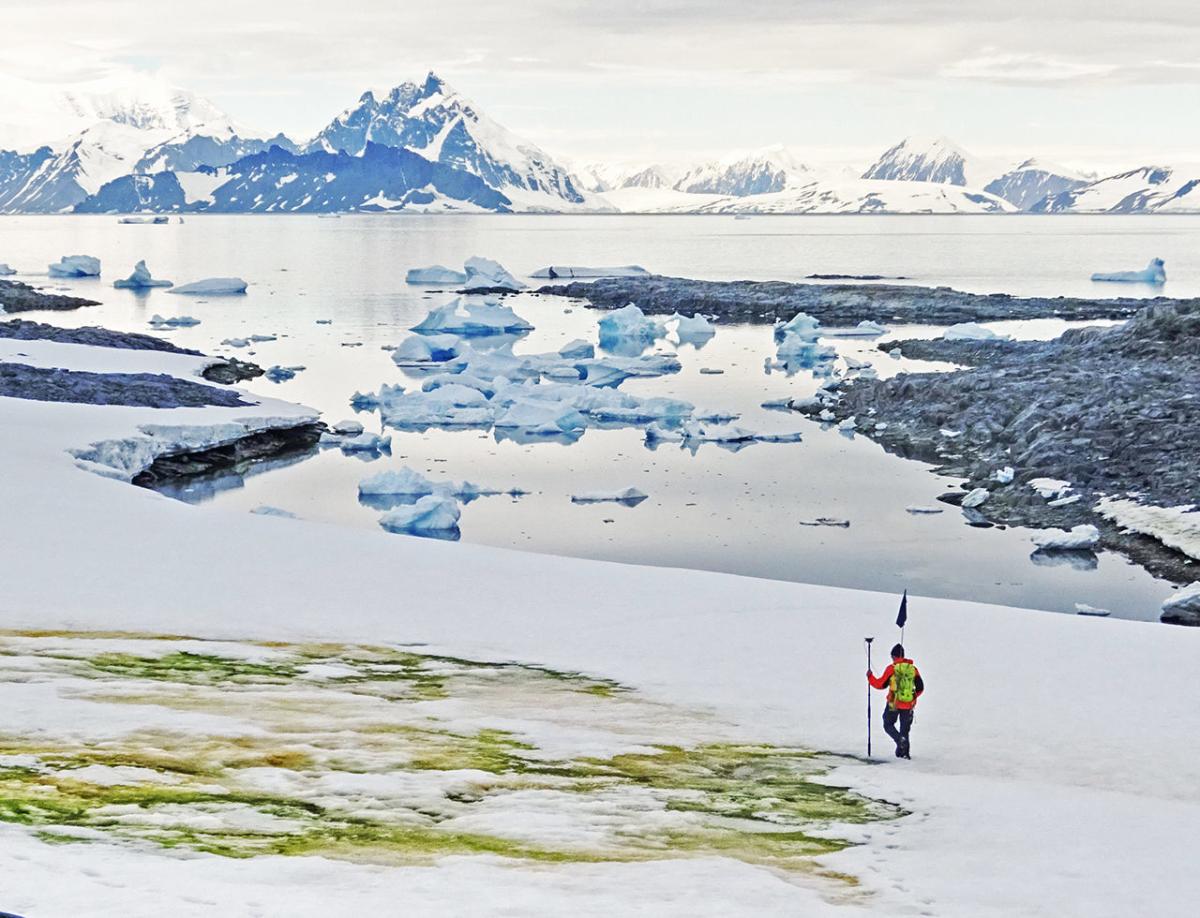This story was originally published by Atlas Obscura and is reproduced here as part of the Climate Desk collaboration.
Photosynthesis and Antarctica. It may not be the most intuitive combination, but the icy continent — famous for sculptural icebergs and marching penguins — is also home to communities of blooming algae, mosses, lichens, and even one species of grass.
They’re rare, of course: Less than one percent of the entire continent is permanently ice-free to begin with. And what terrestrial vegetation does exist must rely largely on melting snow and ice for its water supply.
It’s all part of a fragile ecosystem that scientists are eager to understand as global temperatures rise, affecting not only large sheets of Antarctic ice but also the delicate balance of life there.
A team of U.K. scientists recently created the first-ever large-scale map and estimate of the extent of green algae on the Antarctic Peninsula — a mountainous extension that stretches more than 800 miles toward South America and has experienced one of the most rapid rates of warming in the world. The study results, published in the journal Nature Communications, show that the “gr... Read more
